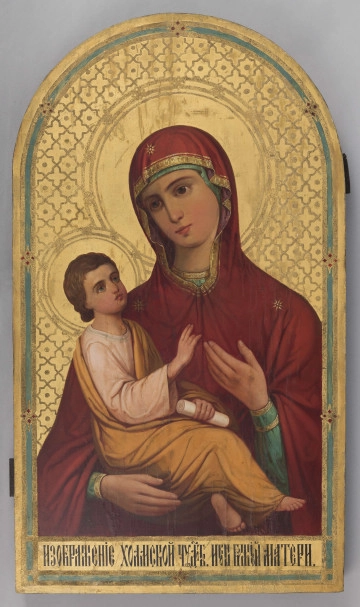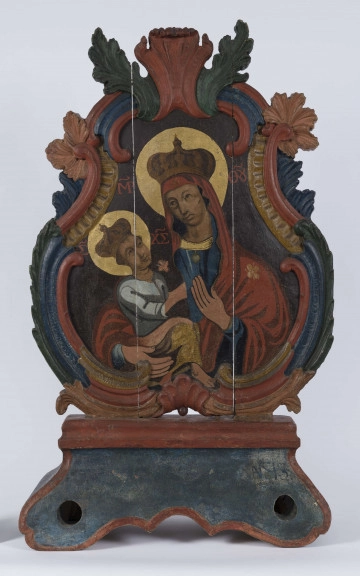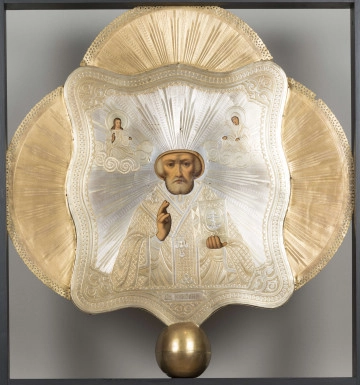
Our Lady of Chełm
1801 — 1900
National Museum in Lublin
Part of the collection: Money on Polish territory in the Middle Ages
Matthias Corvinus was the son of Jan Hunyady, the hero of the fight against the Turks. As the ruler of Hungary, he continued minting gold ducats, also called florins, and in Hungary forints. Until 1470, they retained their previous design with the figure of Saint Władysław on the reverse. Like his predecessors to the Hungarian throne, Matthias placed the Hungarian coat of arms on the obverse shield. Next to it there was a Lorraine cross symbolising Slovakia, the Hunyadi family emblems – especially the raven (Latin: corvus – hence Matthias' nickname) and the lion. The first period of Matthias' reign was marked by the King's battles with internal opposition. It was only after he had consolidated his power that the new king devoted more attention to foreign policy. The result of his actions was the adoption of the Bohemian crown in 1469. Although with the help of the Catholic and conciliatory Hussite nobility he managed to subdue only Silesia and Moravia while Bohemia remained under the rule of George of Poděbrady, who was not recognised by the papacy, Matthias considered himself the only legal ruler of Bohemia. In 1470, the King introduced changes to the minted ducats. While keeping the figure of the patron saint of Hungary – St. Władysław – on the obverse, he ordered to put the figure of the Virgin Mary with Child on the obverse, thus the images on the coin lost the direct reference to the ruler. This role was left only to the inscription in the rim. The change was adopted for the following years. The popularity of Hungarian ducats led to the fact that they were eagerly accepted also in other countries. This also had an impact on the history of Polish coinage. A shortage of bullion meant that Poland lacked native means of payment for larger transactions. Therefore, this role was fulfilled by foreign coins – initially Czech, and later also Hungarian. From the 14th century onwards, ducats were increasingly commonly used in Poland for larger transactions. In the 15th century, the value of a ducat was set at 30 groszy. The same value, i.e., 30 groszy, was from 1496 treated as a conversion unit referred to as the Polish zloty. In this way, the Hungarian ducat for a short time became the equivalent of the Polish zloty.
The presented coin belongs to the type introduced in 1470, as evidenced by the image of the Virgin Mary with Child. It was struck at the mint in Nagybánya (today's Baia Mare in Romania), which can be recognised by the letter ‘n’ next to the figure of St Władysław.
Leszek Poniewozik
Author / creator
Dimensions
cały obiekt: diameter: 28 mm
Object type
numismatic
Technique
stamp minting
Material
gold
Creation time / dating
Creation / finding place
Owner
The National Museum in Lublin
Identification number
Location / status

1801 — 1900
National Museum in Lublin

1801 — 1900
National Museum in Lublin

1890 — 1910
National Museum in Lublin
DISCOVER this TOPIC
National Museum in Lublin
DISCOVER this PATH
Educational path